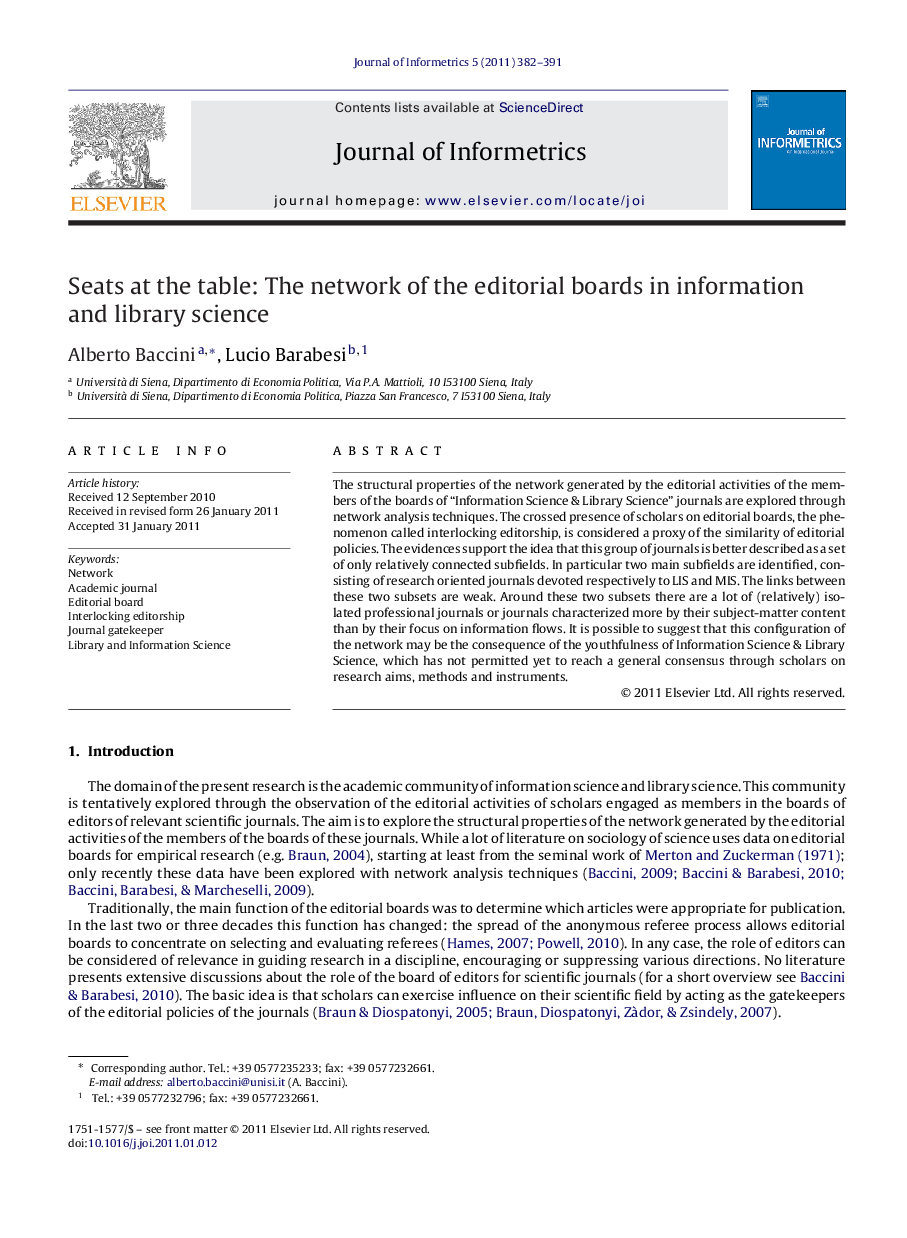| Article ID | Journal | Published Year | Pages | File Type |
|---|---|---|---|---|
| 524065 | Journal of Informetrics | 2011 | 10 Pages |
The structural properties of the network generated by the editorial activities of the members of the boards of “Information Science & Library Science” journals are explored through network analysis techniques. The crossed presence of scholars on editorial boards, the phenomenon called interlocking editorship, is considered a proxy of the similarity of editorial policies. The evidences support the idea that this group of journals is better described as a set of only relatively connected subfields. In particular two main subfields are identified, consisting of research oriented journals devoted respectively to LIS and MIS. The links between these two subsets are weak. Around these two subsets there are a lot of (relatively) isolated professional journals or journals characterized more by their subject-matter content than by their focus on information flows. It is possible to suggest that this configuration of the network may be the consequence of the youthfulness of Information Science & Library Science, which has not permitted yet to reach a general consensus through scholars on research aims, methods and instruments.
► Interlocking editorship indicates the crossed presence of scholars on editorial boards of journals. ► It is a proxy of the similarity of their editorial policies. ► Interlocking editorship in Information Science & Library Science is explored with network analysis. ► Two main subfields are identified, consisting of LIS and MIS research oriented journals. ► This is the result of a lacking general consensus on research aims and methods in a young research field.
